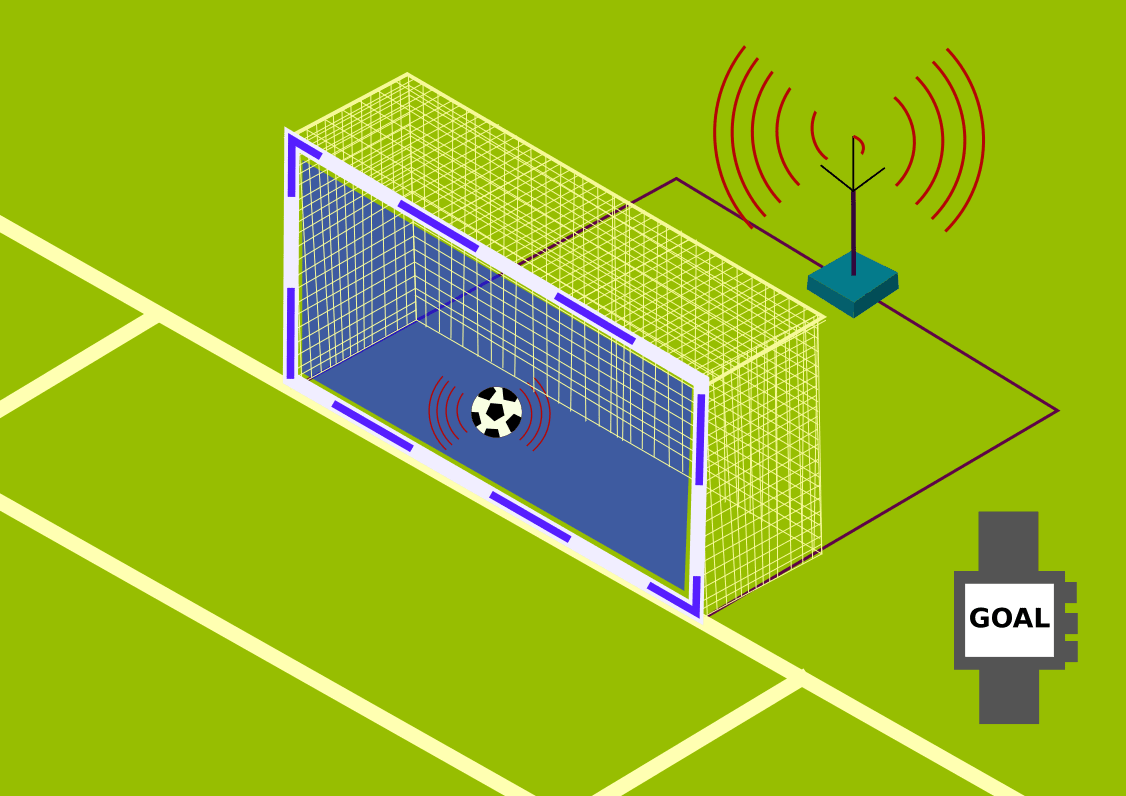
Modern technological solutions allow to conduct competitions in various sports more fairly. The revolutionary system of monitoring ball movements has not escaped the world of soccer either. What is goal-line technology and how does it work?
The goal-line technology system appeared in professional soccer relatively recently. It was only in 2012 when the International Federation of Football officially approved its use, adapting the rules of the game to it. The use of goal-line is allowed during matches at the international level, but is not mandatory. The use of this innovation is especially visible in the top domestic leagues, although not all clubs decide to install the modern system. The goal-line technology can be seen permanently in the Bundesliga, Serie A or Premier League. It has become a technical standard to introduce goal-line at the level of the most important and prestigious football tournaments in the world, such as Champions League, World or European Championships – both in men’s and women’s competitions.
An important aspect is that the information obtained from the program is only to inform the referee who makes the final decision whether or not to award a goal. The regulations that allow the use of advanced technology relate to the possibility of modifying the frame of the goal and the use of special balls, as well as requiring prior testing of the efficiency of all equipment just before the start of each match. Furthermore, the system must immediately show if the ball has crossed the goal line and accurately determine its position.
The goal-line signal has to show exactly if and when the ball has crossed the line between the posts and below the crossbar. Special cameras that monitor and record the movement of the ball are placed all over the pitch. There are usually about 14 devices, mostly mounted near both goals. This gives the system a comprehensive image of several thousand frames per second. The recorded image is transferred to a computer, which transfers the movement of the ball onto a 3D map. In this way the system is able to determine the exact position of the ball and whether it has completely crossed the goal line. After the ball is placed in the goal, the program immediately sends feedback to the head referee, who can officially confirm the scoring. Sensors placed inside the ball also help in the precise reproduction of its position.
The collected data allows the system to be nearly one hundred percent error-free, although there have been plenty of mistakes – even during the most important football tournaments in the world. One of the most famous situations in the media was when the system mistakenly treated the color of goalkeeper’s shirt as a movement of the ball and, as a result, automatically recognized crossing the goal line. The referee has to make his own decisions in case of such mistakes. Moreover, as with VAR, the referee can check the image and objectively assess the situation on the pitch.
🏴 #PremierLeague: #AstonVilla – #SheffieldUnited
❌ The first mistake of the Goal Line Technology"The unusual combination of the players positions have not allowed 7 cameras to identify the goal" says the GLT vendor pic.twitter.com/LSjay12jsQ
— Sport⚽️InfoData 🌐 (@FInfodata) June 18, 2020
Although the goal-line technology system has been functioning in professional soccer for a few years now, there are still voices of specialists who negatively assess this program. Critics point out that modern technology eliminates human interference in the game and takes away the satisfaction of debating a possible mistake. The validity of such arguments is strongly disputed by goal-line supporters, who see greater fairness and a reduction in the risk of a referee making a simple mistake.
The controversy surrounding GLT also relates to the costs incurred in installing and running goal-line checks. Due to limited budgets, most clubs in European leagues are unable to pay for the installation and operation of the system, and this comes at a very high cost. It is estimated that the cost of installation ranges from 250 thousand euros upwards. To these prices should also be added another few thousand spent during each match. An alternative to modern technology is to invest in training line judges and placing an increased number of them on the pitch. In the perspective of a coronavirus pandemic, however, this solution seems much less likely.
Featured photo: Ranjithsiji, CC BY-SA 4.0, via Wikimedia Commons